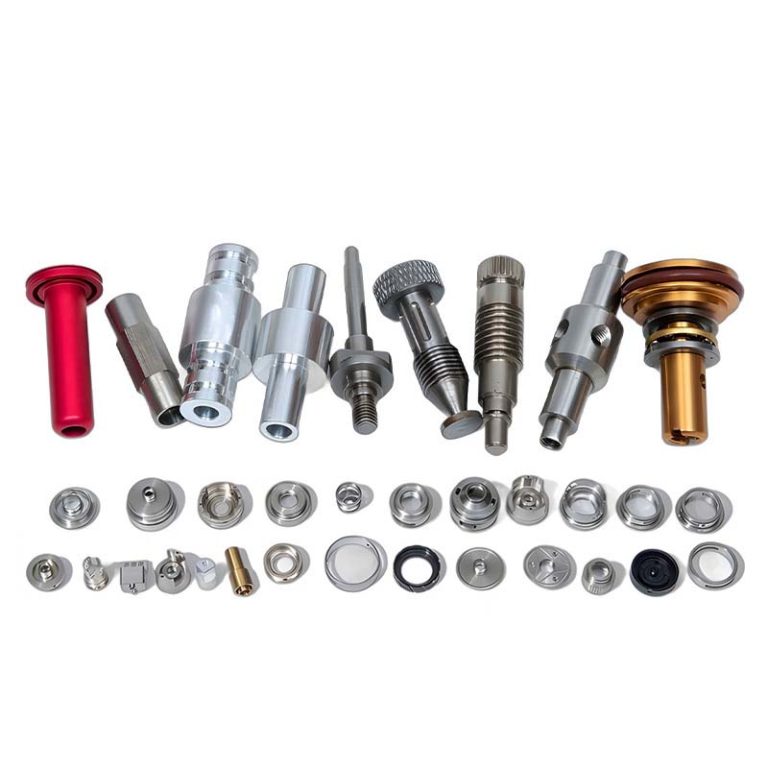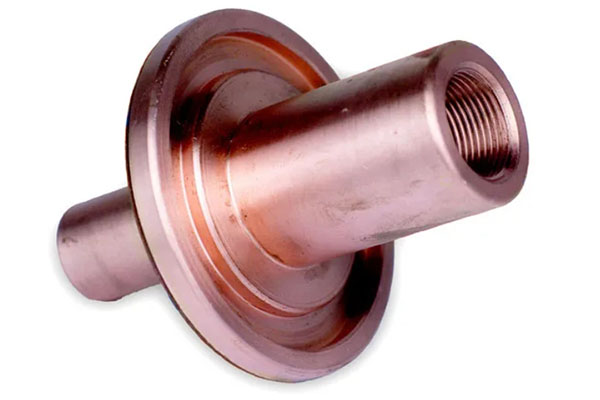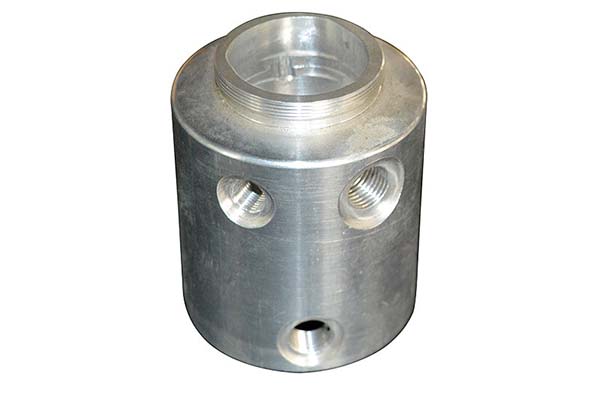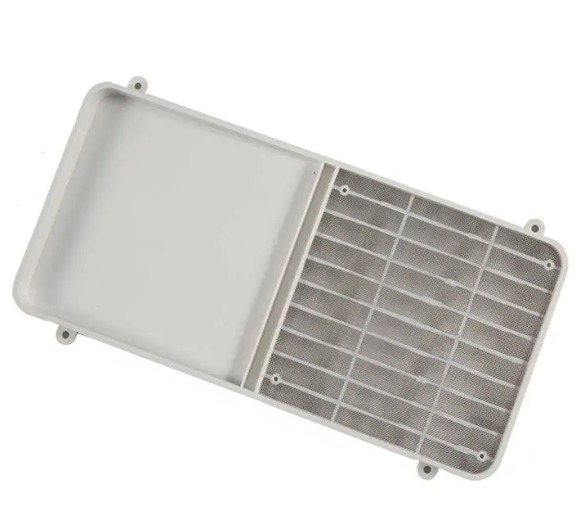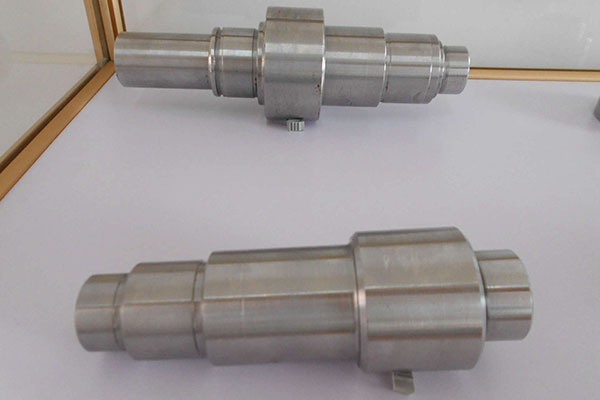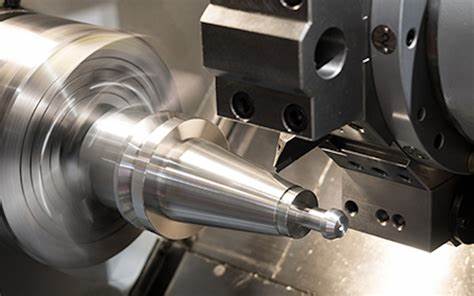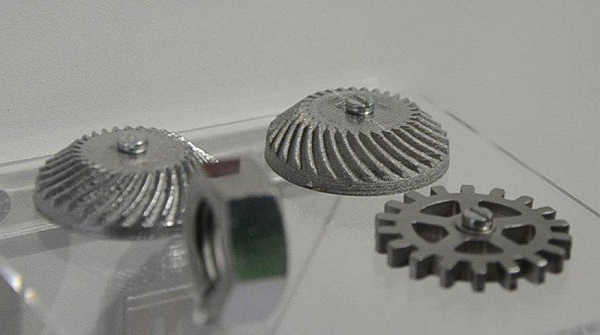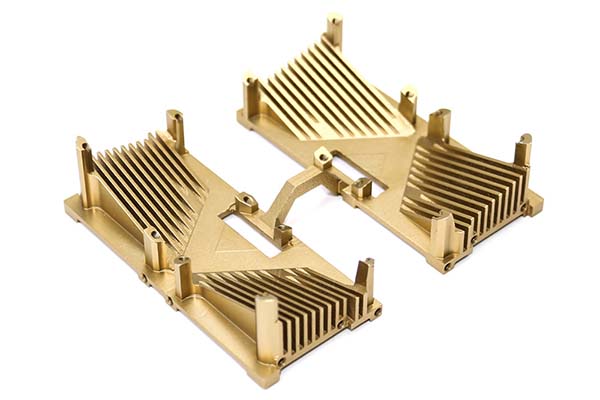The Basics of CNC Machining
What is CNC Machining?
CNC machining, short for Computer Numerical Control machining, is a revolutionary manufacturing process that has transformed the way precision - crafted metal components are produced. In traditional machining, operators manually control the movement of machine tools such as lathes, mills, and drills. However, in CNC machining, this control is automated through the use of computer programs.
A CNC machine is programmed using a specialized language, often G - code. This code contains a set of instructions that precisely define the movement of the cutting tools and the workpiece. For example, a G - code instruction might specify the speed at which the spindle rotates, the depth of the cut, and the path that the tool should follow. These instructions are fed into the CNC machine's control system, which then translates them into precise movements of the machine's axes.
This automation brings several key advantages. First, it allows for a high degree of precision. CNC machines can achieve tolerances as tight as ±0.001 inches (±0.0254 mm) or even better in some high - end applications. This level of precision is extremely difficult to achieve consistently with manual machining. Second, CNC machining is highly repeatable. Once a program is set up, the machine can produce identical parts over and over again, ensuring uniform quality in mass production.
The Process of Metal Creation in CNC Machining
Step - by - Step Breakdown
- Design and Programming
- The journey of creating precision - crafted metal in CNC machining begins with design. Engineers use Computer - Aided Design (CAD) software to create a 3D model of the desired metal component. CAD software, such as SolidWorks or AutoCAD, offers a wide range of tools for creating complex geometries. For example, when designing a custom - made engine part, the engineer can use SolidWorks to accurately define the part's outer shape, internal channels, and any threaded holes or grooves. The software allows for easy modification and optimization of the design, ensuring that all the functional requirements are met.
- Once the design is complete, the next step is programming. Computer - Aided Manufacturing (CAM) software is then employed to convert the CAD model into a set of instructions that the CNC machine can understand. This process involves generating tool paths, which define the movement of the cutting tools during machining. The CAM software also calculates important parameters such as spindle speed, feed rate, and depth of cut. These parameters are crucial as they affect the quality of the finished product, the machining time, and the lifespan of the cutting tools. Finally, the CAM software generates G - code, which is the language that the CNC machine's control system reads to execute the machining operations.
- Material Selection
- The choice of material is a critical factor in CNC machining, as it directly impacts the performance, durability, and cost of the final product. Here are some commonly used metals in CNC machining and their characteristics:
| Metal | Characteristics | Suitable Applications |
| Aluminum | Lightweight, with good thermal conductivity and corrosion resistance. It is relatively easy to machine, making it a popular choice for high - speed machining. | Aerospace components (e.g., aircraft wings and fuselage parts), automotive parts (such as engine blocks and wheels), and electronic device enclosures. In the aerospace industry, aluminum alloy components help reduce the overall weight of the aircraft, improving fuel efficiency. |
| Stainless Steel | Offers excellent corrosion resistance, high strength, and heat resistance. However, it is more difficult to machine compared to aluminum due to its higher hardness. | Medical equipment (like surgical instruments and implants), food processing equipment, and industrial machinery parts that need to withstand harsh environments. Surgical instruments made of stainless steel ensure hygiene and long - term durability. |
| Copper | Has high electrical and thermal conductivity, as well as good malleability. It is often used in applications where conductivity is crucial. | Electrical components such as connectors, heat sinks, and in some cases, decorative items due to its attractive appearance. |
| Titanium | Known for its high strength - to - weight ratio, excellent corrosion resistance, and ability to withstand high temperatures. Machining titanium can be challenging due to its low thermal conductivity, which can cause heat to build up in the cutting zone. | Aerospace applications (engine components and structural parts), medical implants (hip and knee replacements), and high - performance sports equipment. In the aerospace field, titanium components can endure the extreme conditions of flight. |
- The Machining Operations
- Milling: Milling is a versatile machining operation where a rotating multi - point cutting tool removes material from the workpiece. It can create a variety of shapes, including flat surfaces, slots, pockets, and complex 3D geometries. For example, in the production of a custom - designed mold, milling can be used to create the intricate cavities and details on the mold surface. Milling operations can be carried out on different types of milling machines, such as vertical milling machines (commonly used for general - purpose milling and 3 - axis machining) and horizontal milling machines (suitable for certain types of large - scale or complex - shaped part machining).
- Turning: Turning is used to create cylindrical - shaped parts. In this operation, the workpiece rotates while a single - point cutting tool moves along the axis of rotation to remove material. Lathes are the primary machines used for turning operations. For instance, when manufacturing a shaft for a motor, turning can precisely shape the outer diameter, create tapers, and cut threads on the shaft.
- Drilling: Drilling is a process of creating holes in the workpiece. A rotating drill bit is fed into the workpiece to remove material and form a hole. Drilling can be used to create through - holes (holes that go all the way through the workpiece) or blind holes (holes that do not penetrate completely). For example, in the production of a printed circuit board, drilling is used to create holes for components to be inserted.
| Machining Operation | Tool Movement | Workpiece Movement | Common Applications |
| Milling | Rotating cutting tool moves in multiple axes | Fixed | Creating complex shapes, such as molds, gears, and brackets. |
| Turning | Single - point cutting tool moves linearly | Rotates | Producing cylindrical parts like shafts, bolts, and bushings. |
| Drilling | Rotating drill bit moves linearly | Fixed or rotates (in some cases) | Making holes for screws, bolts, or for inserting components. |
- Quality Control and Inspection
- Quality control is an integral part of the CNC machining process to ensure that the final metal products meet the highest standards of precision and quality.
- Real-time monitoring: During machining, various sensors can be used to monitor the process in real - time. For example, vibration sensors can detect any abnormal vibrations in the machine or the cutting process. Excessive vibrations could indicate issues such as a dull cutting tool, improper workpiece clamping, or machine malfunctions. By detecting these issues early, operators can take corrective actions, such as replacing the cutting tool or adjusting the clamping mechanism, to prevent defects in the finished product.
- Size inspection After machining, the dimensions of the metal component are carefully measured. Coordinate Measuring Machines (CMMs) are commonly used for this purpose. A CMM can accurately measure the length, width, height, and other geometric features of the part, comparing them to the original design specifications. For example, if a part is designed to have a diameter of 10 ± 0.01 mm, the CMM can precisely measure the actual diameter and determine if it falls within the acceptable tolerance range.
- Defect inspection: Visual inspection and non - destructive testing methods are also employed to check for surface defects, internal flaws, and other imperfections. Visual inspection can identify surface scratches, burrs, or other visible defects. Non - destructive testing techniques, such as ultrasonic testing and X - ray inspection, can detect internal voids, cracks, or other hidden defects without damaging the part. These methods are crucial, especially in industries where the integrity of the metal components is of utmost importance, such as aerospace and automotive.
In summary, the process of metal creation in CNC machining is a complex and highly precise sequence of steps, from design and programming to material selection, machining operations, and rigorous quality control. Each step plays a vital role in ensuring the production of high - quality, precision - crafted metal components.
Benefits of Precision - Crafted CNC Machining in Metal Production
High Precision and Consistency
One of the most significant advantages of precision - crafted CNC machining in metal production is its ability to achieve extremely high precision. In industries like aerospace, the tolerances required for components are often in the micron range. For example, turbine blades in jet engines need to be manufactured with such precision that even a minute deviation can lead to significant performance issues, including reduced efficiency and potential safety hazards. CNC machining can consistently meet these tight tolerances, ensuring that each part is virtually identical to the next.
In the medical device industry, the precision of CNC machining is equally crucial. Implants, such as knee and hip replacements, must fit perfectly within the human body. A poorly - machined implant can cause discomfort, infection, or even failure of the implant. With CNC machining, the high precision and consistency mean that manufacturers can produce implants that meet the strictest medical standards, providing better outcomes for patients. According to industry data, the precision of CNC - machined medical implants has led to a significant reduction in post - operative complications, with some studies showing a decrease of up to 30% in implant - related issues over traditional manufacturing methods.
Automation and Efficiency
CNC machining is highly automated, which brings numerous benefits in terms of efficiency. Once the program is set up, the CNC machine can operate continuously, with minimal human intervention. This reduces the risk of human - error, which is common in manual machining processes. For instance, in a large - scale automotive parts production facility, CNC - machined engine components can be produced with a much higher level of accuracy and at a faster rate compared to manual machining.
The automation also allows for faster production times. CNC machines can run 24/7 in some cases, especially in lights - out manufacturing setups. This not only increases the output but also reduces the overall production cost per unit. A study in the manufacturing industry found that companies that switched to CNC machining for metal production saw an average increase in production efficiency of 40 - 50%, mainly due to the reduced setup times and continuous operation capabilities of CNC machines. Additionally, the need for fewer operators means that companies can save on labor costs, which is a significant advantage in a competitive global market.
Flexibility in Design
Another major advantage of CNC machining is its flexibility in design. Since the machining process is controlled by computer programs, it is relatively easy to make changes to the design. All that is required is a modification to the CAD/CAM software, and the new design can be quickly implemented. This makes CNC machining an ideal choice for small - batch production runs or for producing prototypes.
For example, a jewelry manufacturer may want to create a limited - edition line of metal jewelry pieces with unique designs. With CNC machining, they can easily create different designs for each piece without the need for significant re - tooling. In the electronics industry, when developing new prototypes of metal enclosures for devices, CNC machining allows engineers to quickly iterate on the design, making changes to the shape, size, or internal structure as needed. This flexibility in design not only speeds up the product development process but also enables companies to offer more customized products to their customers.
Safety Enhancements
Safety is a crucial aspect in any manufacturing environment, and CNC machining offers significant improvements in this area. Since most of the machining operations are automated, workers are less likely to come into direct contact with dangerous machinery. In traditional machining, operators are constantly exposed to the risks of cuts, abrasions, and injuries from moving parts. However, in a CNC - machining setup, the operator's role is mainly to monitor the machine, load and unload materials, and perform basic maintenance.
For instance, in a metal - cutting operation, the CNC machine's automated tool - changing and workpiece - handling systems reduce the chances of accidents. In a study of manufacturing facilities, it was found that workplaces that switched to CNC machining experienced a 60 - 70% reduction in work - related injuries associated with machining operations. This not only improves the well - being of the employees but also reduces the costs associated with workplace injuries, such as medical expenses and workers' compensation claims.
Yigu Technology's Perspective
As a non - standard plastic metal custom products Supplier, Yigu Technology has deep - rooted experience and robust technical capabilities in the field of CNC machining. With years of dedicated work in the industry, we have successfully served a diverse range of clients across multiple sectors, from small - scale enterprises to large - scale industrial giants.
Our approach to CNC machining is centered around providing customized solutions. We understand that each client's metal - processing needs are unique. Whether it's a one - off prototype or large - scale production, we work closely with our clients from the initial design concept. Our team of experienced engineers can review and optimize the design, taking into account factors such as manufacturability, material cost, and performance requirements. For example, if a client in the electronics industry needs a custom - made metal enclosure with specific heat - dissipation and electromagnetic - shielding properties, we can recommend the most suitable materials and design modifications to achieve the best results.
FAQ
1. What types of metals are best suited for CNC machining?
Aluminum, stainless steel, copper, and titanium are commonly used. Aluminum is great for its lightweight and easy - machinability, suitable for aerospace and automotive parts. Stainless steel offers high corrosion resistance, ideal for medical and industrial equipment. Copper is used for its high conductivity in electrical components, and titanium, with its high strength - to - weight ratio, is used in aerospace and medical implants.
2. How accurate can CNC machining be?
CNC machining can achieve extremely high precision, with tolerances as tight as ±0.001 inches (±0.0254 mm) in many cases. High - end applications can even reach sub - micron levels of accuracy, ensuring that parts meet the most exacting specifications.
3. Can Yigu Technology handle small - batch production runs for CNC - machined metal parts?
Yes, Yigu Technology specializes in providing customized solutions for both small - batch and large - scale production runs. We understand the unique requirements of small - batch production, such as quick turnaround times and flexible design changes, and are well - equipped to meet these needs.
